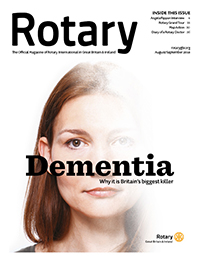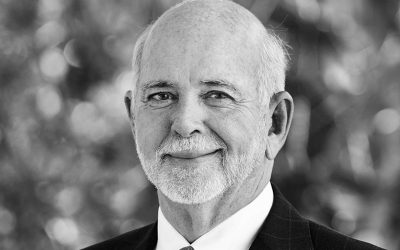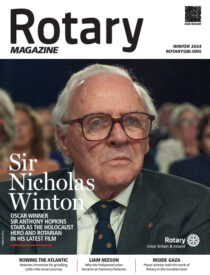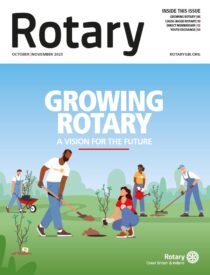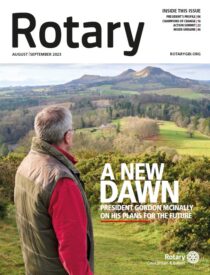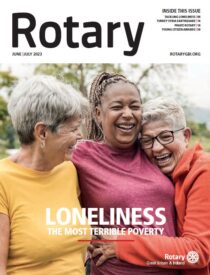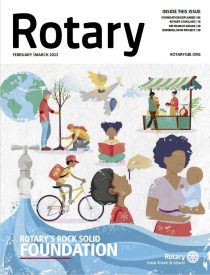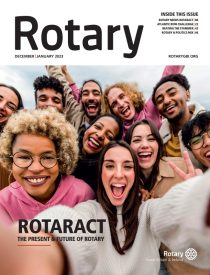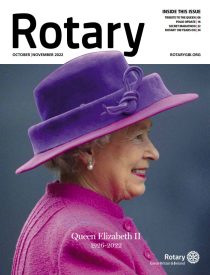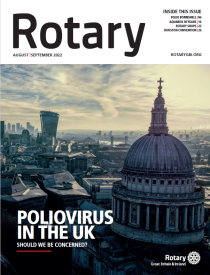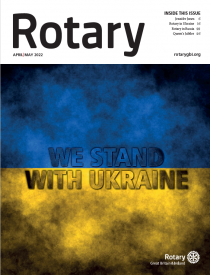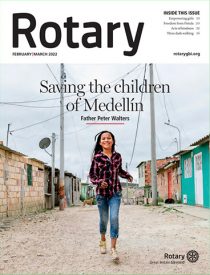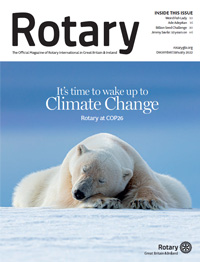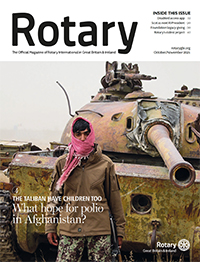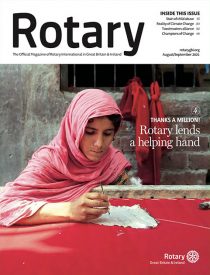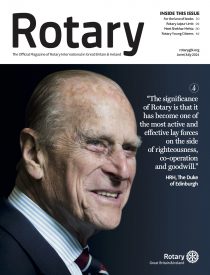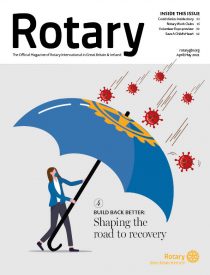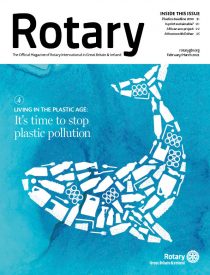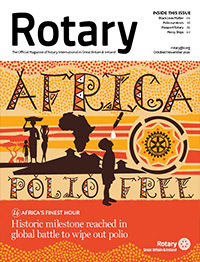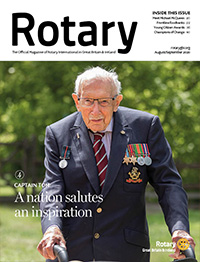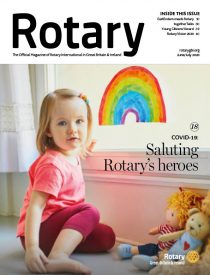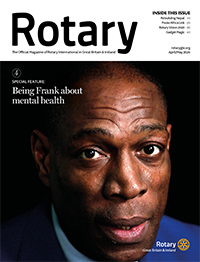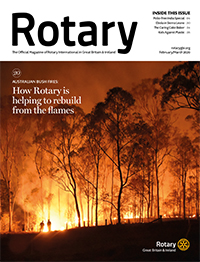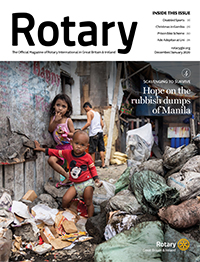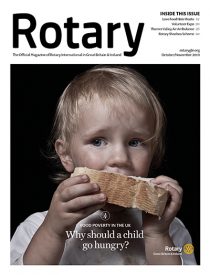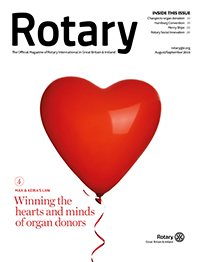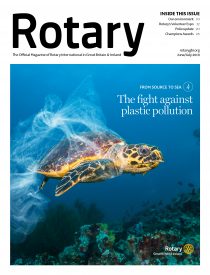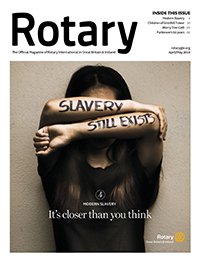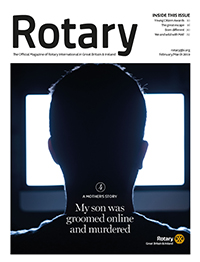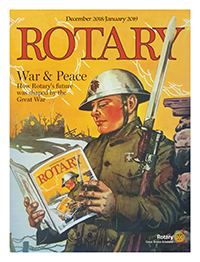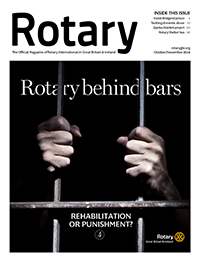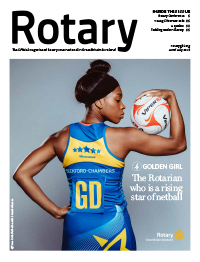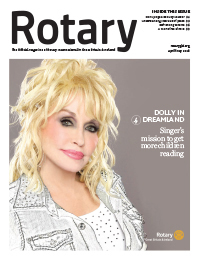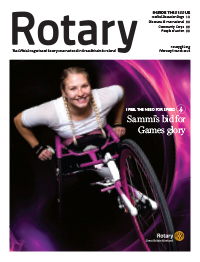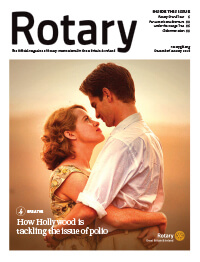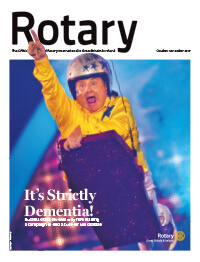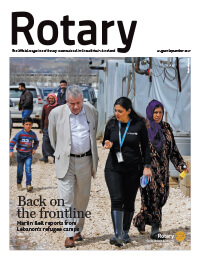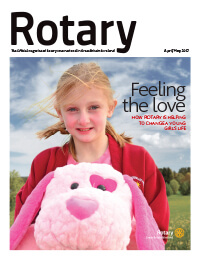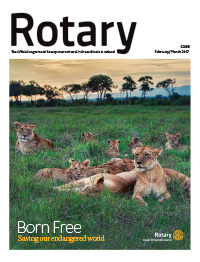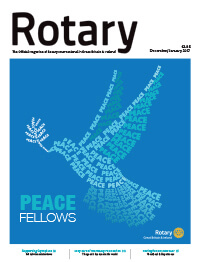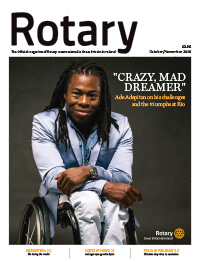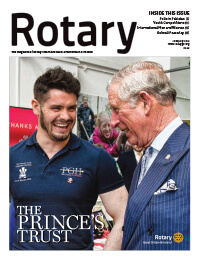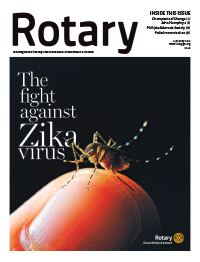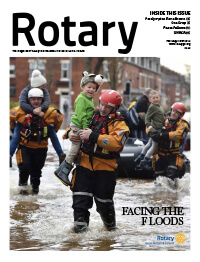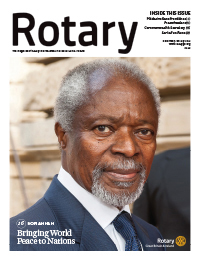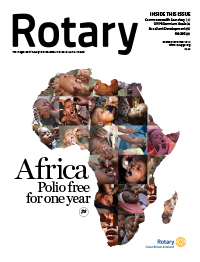Evanston, some 14 miles north of Chicago, is a quiet town sitting on the shore of Lake Michigan, featuring wide streets, classy stores, leafy parks and none of the nose-bleeding high rise tower blocks you’ll find downtown in the Windy City.
It’s also home to Rotary International.
Just outside the RI building on Sherman Avenue lies a statue of a man sitting on packing crates, cradling a baby in his arms as he prepares to give the child polio vaccine. An African boy and an Asian girl stand at his feet watching.
The seven-foot high bronze sculpture represents one of the thousands of Rotarians who have donated time and money to protect children in developing countries from the crippling disease, and which we are so close to eliminating.
On a recent visit to Chicago, I spent some time visiting Paul Harris’s former home in Beverly, to the south of the city, walking around the home of the founder of this great movement.
Later, I spent a couple of days at the Rotary headquarters which helped crystalize what we do as Rotarians, and why we do it. How proud would Paul Harris be now of what Rotary has achieved in 113 years?
Yes, Rotary is, at times, an unwieldy and frustrating bureaucracy of Japanese Knotweed proportions, but my trip to Illinois, including a visit to Paul Harris’s grave, reminded me how the world would be a much poorer place without our organisation.
I was gathered in Evanston with editors of Rotary magazines from around the world. The biggest discussion was about the relevance of a printed magazine and the emergence of digital. Is print about to receive the last rites?
Some countries, the Ukraine for example, have binned their magazine.
I delivered a speech warning fellow editors and RI bigwigs that you ditch the magazine at your peril.
Digital is a fantastic, fast-moving platform which opens up a whole new vista of opportunity to deliver your message, but the trusted magazine remains the best marketing tool Rotary has.
You want to reach out to prospective new members, you want to tell the community and key stakeholders what you are doing, you want advertisers to invest? Print is still the media of choice. Fact.
Those words were supported by Dr Samir Husni, the founder and director of the Magazine Innovation Center at the University of Mississippi.
During his speech, he pointed out how “digital is not the heaven for a sick print product” and urged editors to “create and curate, to make that magazine content credible and collectible”.
Next March, Evanston hosts a meeting of the Rotary Council on Legislation. This august body meets every three years to review proposed changes to the bylaws which govern Rotary.
The future of the global magazines is under serious threat because the bean counters see digital as an easy solution. How foolish they are because they have no proper concept of the power of print and its place in a multi-media society.
It is fair to say that the momentous success of the End Polio Now campaign, which that emotive bronze statue on RI’s doorstep represents, would not have happened without the global reach and resonating impact of the written word.








